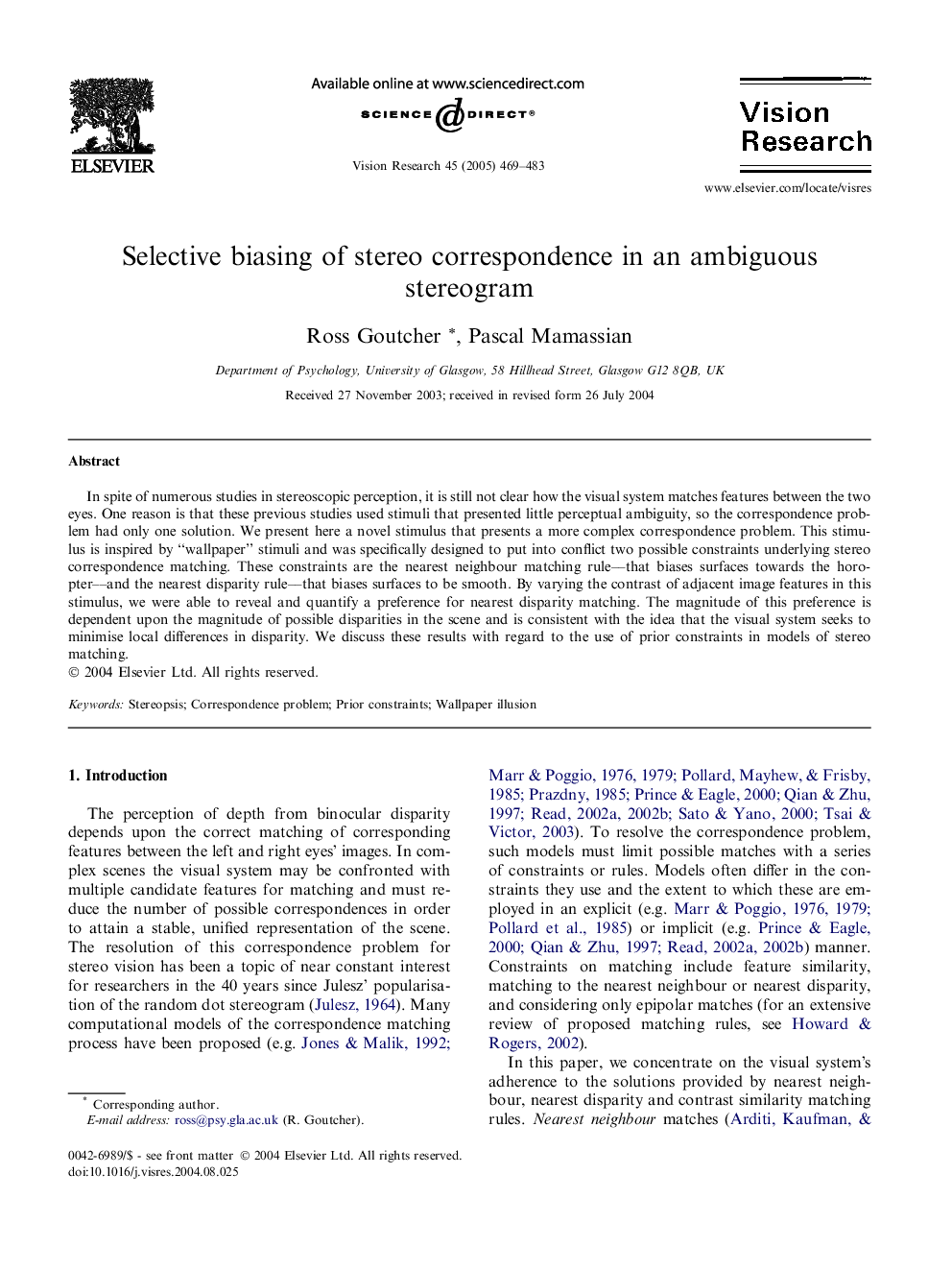| Article ID | Journal | Published Year | Pages | File Type |
|---|---|---|---|---|
| 9348709 | Vision Research | 2005 | 15 Pages |
Abstract
In spite of numerous studies in stereoscopic perception, it is still not clear how the visual system matches features between the two eyes. One reason is that these previous studies used stimuli that presented little perceptual ambiguity, so the correspondence problem had only one solution. We present here a novel stimulus that presents a more complex correspondence problem. This stimulus is inspired by “wallpaper” stimuli and was specifically designed to put into conflict two possible constraints underlying stereo correspondence matching. These constraints are the nearest neighbour matching rule--that biases surfaces towards the horopter--and the nearest disparity rule--that biases surfaces to be smooth. By varying the contrast of adjacent image features in this stimulus, we were able to reveal and quantify a preference for nearest disparity matching. The magnitude of this preference is dependent upon the magnitude of possible disparities in the scene and is consistent with the idea that the visual system seeks to minimise local differences in disparity. We discuss these results with regard to the use of prior constraints in models of stereo matching.
Keywords
Related Topics
Life Sciences
Neuroscience
Sensory Systems
Authors
Ross Goutcher, Pascal Mamassian,
